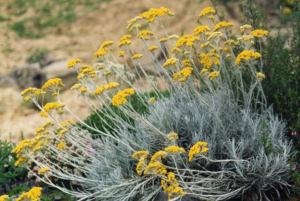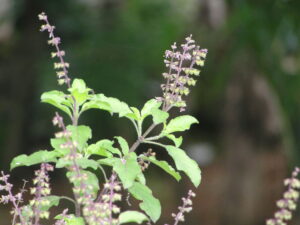I am so enjoying having my faithful aromatic allies with me during this unprecedented time on Mother Earth, that I am getting pulled to write monographs about them and how we use them. This one is about Patchouli (Pogostemon cablin).
Patchouli belongs to the mint family (Lamiaceae) and originates from the Philippines; it is a perennial, branched, aromatic herb with fragrant leaves.
“The composition of the essential oil is complex like many essential oils, but unique because it consists of over 24 different sesquiterpenes, rather than a blend of different mono-, sesqui- and di-terpene compounds.” (1)
Patchouli has been used in the Middle East for its warm, woody and earthy aroma for centuries. It was introduced to India in the 1830’s through the botanical garden of Calcutta.
It then arrived in Europe in the middle of the 19th century as an important ingredient in perfumes. However, many of us probably first came into contact with it in the 70’s during the rise of the new age movements when this perfume was used by both men and women as an olfactory message or symbol of belonging to the movement of free love and flower power. Unfortunately, most of the patchouli that was floating around the general atmosphere at that time was of a very low quality, lacking refinement and elegance. It is now having a renewal with the big perfume houses as a bottom note in perfumery, it has strong fixative action that helps ‘hang onto’ the more volatile aromas in a perfume and the quality is of course much higher than in the 70’s.
People often have a strong reaction to patchouli, either loving it or hating it. Florian hated it when he was younger, but now loves the patchouli we work with that comes from our producer in India. So it is worth keeping an open mind as quality plays a huge part in how we relate to this very strong and powerful aroma.
I like using this oil, too because it is inexpensive and has no sustainability issues as it is so easy to cultivate in warm and humid climates. Patchouli also gets better with age. We have noticed that the oil that we use is losing its harshness and becoming sweeter and more elegant over time.
Patchouli oil is used therapeutically for its antidepressant, anti-inflammatory, antiseptic, aphrodisiac, astringent, wound healing, cell protection, deodorant, diuretic, febrifuge, fungicide, insecticide, sedative and toning qualities. (2)
Patchouli resonates with the root chakra, which makes it a good ally for grounding. It helps us to tune in to ourselves and accept who we are fully and so we can stay aligned with our convictions, visions and ideas. Patchouli connects us to our roots and is helpful in helping us to tap into our ancestral strengths.
It has an opening effect on our spirit and our perception of life. It holds the space for us so we can move forward serenely and sure-footedly through any negative self-beliefs, fears, anxieties or self-restrictions and take the path forward that we really desire, which makes it a great ally for the times we are living in the moment.
If you are feeling overwhelmed, stressed, mentally and emotionally nervous keep patchouli on you and smell it from the bottle as needed. It stimulates physically and mentally in a positive way while keeping us centered and grounded at the same time.
And of course, patchouli is great when you need a helping hand to feel relaxed and open in intimacy as it helps to connect us to our sensuality and let go both of the body and the mind.
References
- Buré and Sellier, 2004; Dung et al., 1990)
- An introduction to patchouli (Pogostemon cablin Benth.) – A medicinal and aromatic plant: It’s importance to mankind by Ramya H. G.I, Palanimuthu, Singla Rachna





